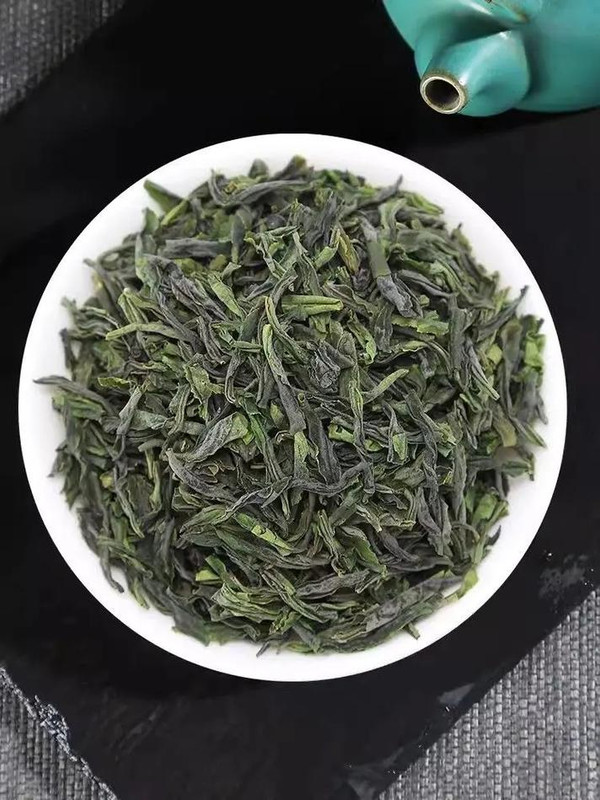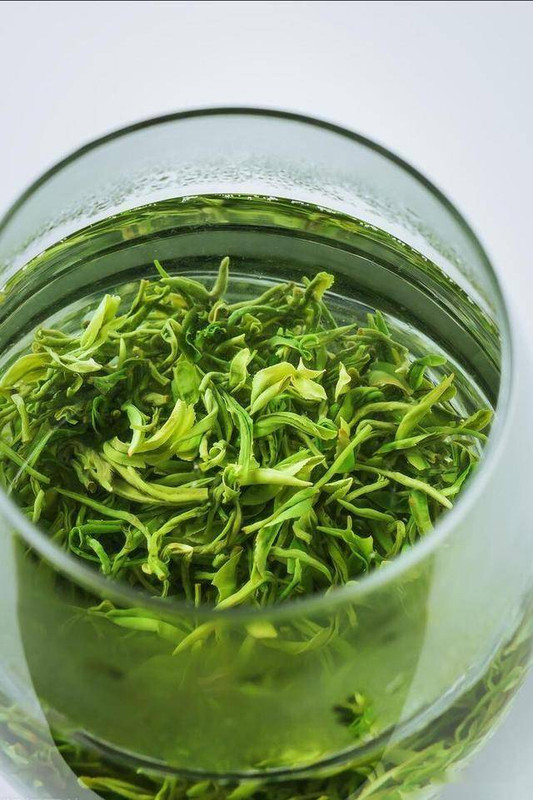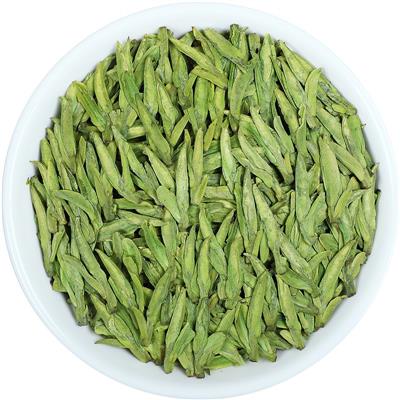1. Characteristics: A Tea of Paradoxes

Luan Guapian, or “Melon Seed” tea, defies convention as the sole green tea crafted without buds or stems. Its leaves, plucked in their prime, are shaped into slender, jade-green blades resembling melon seeds—a homage to its name. The liquor, a luminous emerald, exudes a toasty aroma with notes of chestnut and seaweed, while the taste profile balances roasted barley richness with a crisp, orchid-like finish. Unlike most green teas, Guapian undergoes a unique “pulling fire” step, lending it a smoky depth that lingers like autumn bonfires.
2. History: From Imperial Tribute to Modern Icon
The tea’s legacy dates to the Tang Dynasty, when it was prized as a “tribute tea” for emperors. Its modern renaissance began in 1905, when a Qing Dynasty official standardized production, elevating it to national prominence. During the 1972 Nixon-Mao summit, Guapian was served as a symbol of Sino-American détente, cementing its role as a diplomatic brew. Today, it remains one of China’s “Ten Famous Teas,” revered for its uncompromising craftsmanship.
3. Origin: The Mist-Shrouded Valleys of Anhui
Guapian’s birthplace lies in the Dabie Mountain Range of Anhui Province, specifically:
- Qiyun Township: The spiritual heartland, where tea gardens cling to slopes at 300–800 meters, shrouded in mist 250+ days annually.
- Jixi County: Famed for its “cloud-tea” microclimate, with bushes rooted in red clay soils rich in iron oxides.
- Jinzhai County: A newer production hub blending tradition with organic farming.
The valley’s ecosystem—dense bamboo forests, mineral-rich streams, and dramatic diurnal temperature shifts—imparts a unique “mountain flavor” (shanwei) to the tea.
4. Production Process: The Alchemy of Fire
a. Plucking (立夏前后):
Harvested post-Lixia (Start of Summer) in early May, when leaves reach optimal maturity. Only the third and fourth leaves are chosen, ensuring a balance of tenderness and flavor.
b. Withering (摊青):
Leaves are spread on bamboo mats for 4–6 hours, reducing moisture to 70% and softening cell walls.
c. Fixation (生锅):
Leaves are tossed in woks at 120°C for 2–3 minutes, halting oxidation. Artisans use wooden rakes to prevent scorching, a technique requiring decades to master.
d. Roasting (拉老火):
The defining step: leaves are roasted over charcoal in baskets heated to 160°C, with artisans rhythmically lifting and lowering the baskets 150+ times. This “pulling fire” process caramelizes sugars, creating Guapian’s signature toasty flavor.
e. Cooling (摊凉):
Roasted leaves are spread to cool, locking in aroma and creating a glossy finish.
5. Brewing Method: The Ritual of Fire and Ice
- Water Quality: Use soft water (TDS < 100ppm) to avoid masking delicate flavors.
- Temperature: 90°C (194°F) to coax out complexity without bitterness.
- Tea-to-Water Ratio: 5g tea per 250ml water (adjust for preference).
- Infusion Time:
- 1st infusion: 1.5 minutes (unveils toasty and chestnut notes).
- 2nd–3rd infusions: 2–3 minutes (develops orchid-like sweetness).
- Vessel: Purple clay teapots or porcelain gaiwans best showcase the tea’s layered flavors.
6. Authentication: Decoding Genuine Guapian
- Visual Cues: Genuine Guapian has a “melon seed” shape with a glossy, dark jade hue. Counterfeits are often irregular or overly curled.
- Aroma: Authentic leaves emit a roasted chestnut fragrance; artificial scents in low-grade teas smell cloying.
- Liquor: Premium grades yield a clear, emerald-green brew; inferior teas produce a murky, yellow-tinged liquid.
- Taste: Genuine Guapian has a lingering sweetness (“hui gan”) that coats the throat; fakes leave a flat, astringent finish.
7. Grading Standards & Pricing
Guapian is graded by leaf size, color, and aroma:
- Supreme Grade (极品): Uniform melon seed shapes with minimal breaks. Price: 100–200/50g.
- Grade I (特一级): Consistent leaves with visible down. Price: 60–120/50g.
- Grade II–III (特二级–三级): Smaller leaves with visible stems. Price: 30–80/50g.
Price Drivers:
- Altitude: Tea from 600m+ gardens commands a premium.
- Harvest Time: Pre-Lixia (立夏前) teas fetch 2x post-Lixia prices.
- Certification: Organic or GI (Geographical Indication) tags increase value.
8. Health Benefits: A Brew for Resilience
- Antioxidant Powerhouse: Rich in catechins linked to reduced inflammation and cancer prevention.
- Metabolic Boost: Caffeine and L-theanine synergize to enhance focus without jitters.
- Digestive Aid: Traditionally used to alleviate bloating and improve fat metabolism.
- Oral Health: Polyphenols inhibit bacteria linked to cavities and gum disease.
Epilogue: The Tea That Redefines Green
Luan Guapian is not merely consumed—it is experienced. From the hands of Dabie Mountain artisans to the teacups of global connoisseurs, it embodies the philosophy of “fire and restraint.” In a world obsessed with homogeneity, Guapian’s smoky depth and layered flavors remind us that true luxury lies in embracing paradox. As climate change and market pressures test its future, the legacy of this “leafless tea” endures—a testament to the resilience of craft and the timeless allure of a cup steeped in mountain magic.



